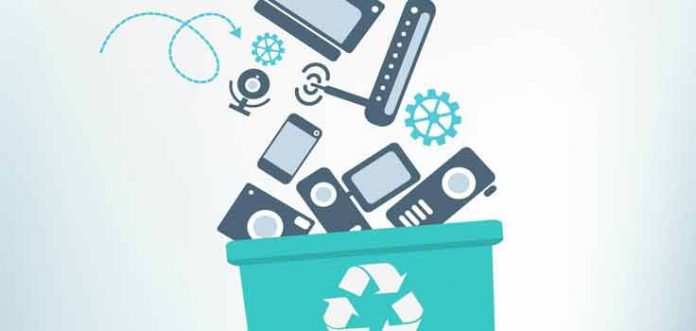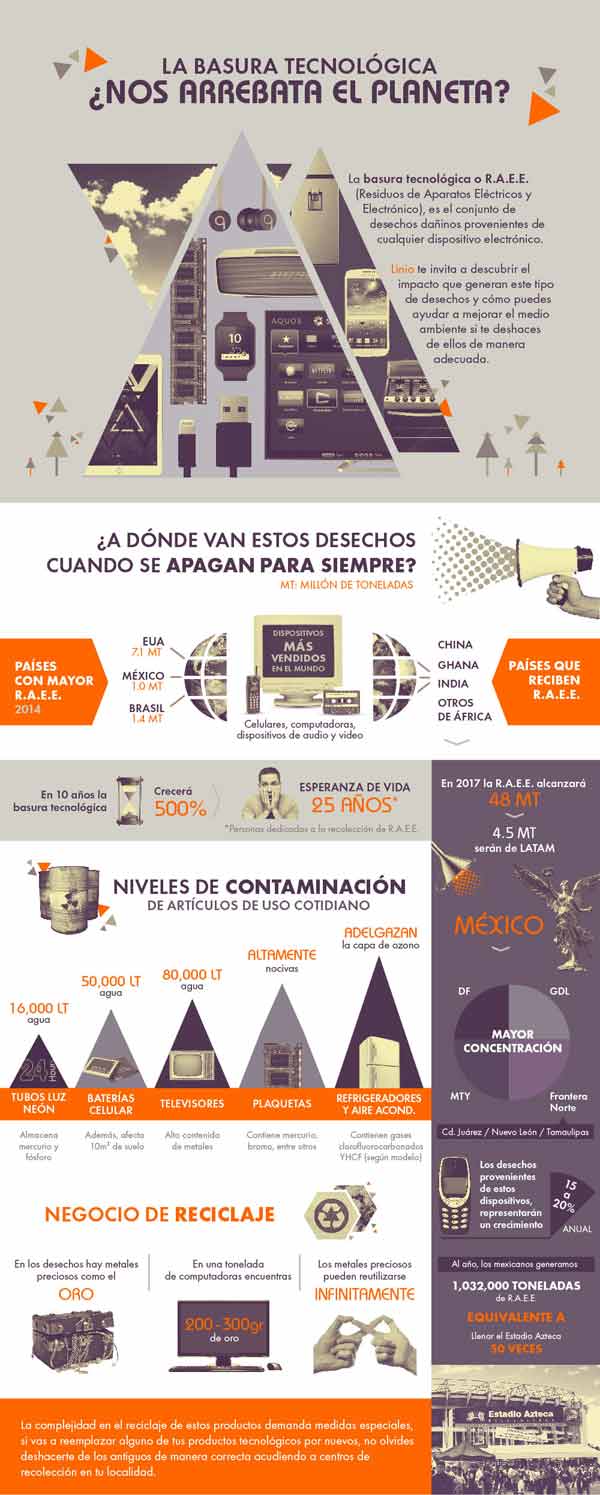
Now that we live in the digital age, the economic development of countries depends mainly on the production and marketing of electronic devices. Today we invite you to discover what disadvantages some of the current technological advances generate for society and the environment, which, contradictorily, are not exploited in favor of a sustainable world.
Technological or electronic waste refers to the set of hazardous waste from computers, cell phones, televisions, music players and, in general, from any electronic device. These wastes contain heavy metals and toxic chemicals that cannot be easily removed from the environment, and there is no “safe” way to recycle these materials.
The decrease in the cost of technological items has made acquiring a new one more practical than repairing it, in addition, new requirements, versions, operating systems and software in general force us to update our gadgets more frequently without thinking about the repercussions that this entails.
In May 2014 the portal Meeting belonging to the Argentine Ministry of Education published a documentary on technological waste, where it identifies cell phones, computer systems, and audio and video devices, in that order, as the three best-selling items. Approximately 30 years ago, the advantage offered by electronic products was durability, buying “a television for life”, currently the devices are considered “disposable”.
It is of vital importance that we all assume responsible environmental awareness.
Where does this technological waste go when it is turned off for good?
When we buy an electronic device we hardly think about the parts that make it work, we even do not know the most appropriate way to dispose of them and they end up mixed with conventional garbage in deposits, sanitary landfills, ravines or clandestine dumps; the mishandling of these wastes generates a great danger to health and the environment.
Electronic waste is often ends up in developing countries such as China, India, Ghana among others on the African continentwhere low-income people are dedicated to collecting such devices for dismantle them with your own hands, separate the useful components and sell themthe rest is burned, generating a large amount of toxic gases that affect the health of the people who live around it.
The development of this activity is the only form of livelihood for these families who put their lives at risk by coming into direct contact with toxic substances that, at the same time, contaminate the land and groundwater. People engaged in this “recycling” have an alarming life expectancy of 25 years.
In 2014, the UN released figures in which the American continent generated a total of 11.7 million tons of WEEE products (Waste Electrical and Electronic Equipment) as they are also known. The three countries with The largest generation of this waste was the USA with 7.1 million tons, Brazil with 1.4 million tons and Mexico with one million tons.
And the waste from Mexico?
Statistics from the INECC (National Institute of Ecology and Climate Change) show that in our country the devices that are most discarded are televisions, followed by desktop computers, laptops, audio systems and finally, cell phones that for now have the highest percentage of annual growth with 15 to 20%.
Álvaro Núñez Solís, Director of Recycling Electronics Mexico, said that at the “household level” appliances such as televisions and VCRs are the most discarded items, while at the “business level” printers and desktop computers dominate.
The concentration of electronic waste is found in the metropolitan areas of the Valley of Mexico, Guadalajara, Monterrey and the northern border (Ciudad Juárez, Nuevo León and Tamaulipas), in this border area a massive importation of used equipment has been detected and according to information from the Massachusetts Institute of Technology, our country is one of the main destinations for these devices exported from the US, among which electronic waste entered the country illegally has been detected.
The challenges
In the same way, they call for the creation of recycling policies and programs for these products, since they would represent a big business since “computer and mobile waste contains precious metals” (gold, silver, palladium, iridium, germanium and copper).
In Mexico there are different alternatives to recycle this waste:
- The government program called “Recycletron” organized every month by the Secretary of the Environment of the DF (SEDEMA). The dates and venues change and you can check them on the Sedema page, whose link appears below.
- The recycling program “del barter” is another option organized by SEDEMA, in which all types of recyclable waste such as paper, cardboard, glass, aluminum, PET and of course electronic waste are collected. In return you receive points redeemable for fruits, vegetables and plants “in the barter market”.
- The Mexican Foundation for Technological Recycling in favor of Education has a collection center located at Javier Mina #4 Col. La Estación in Lerma, State of Mexico. If you cannot transfer your WEEE, contact the foundation and they send the unit to collect the material.
- Finally, and considering that many of the technological waste in disuse are still useful, you can donate them to people or institutions that make use of them, an example of this type of association is “Infancia México”.
The pollution generated by electronic items represents a huge health risk and the complexity of their recycling demands special measures. Each of us can contribute by not dumping our e-waste with the rest of the waste, but instead delivering it to specialized recycling centers.

Sources:



